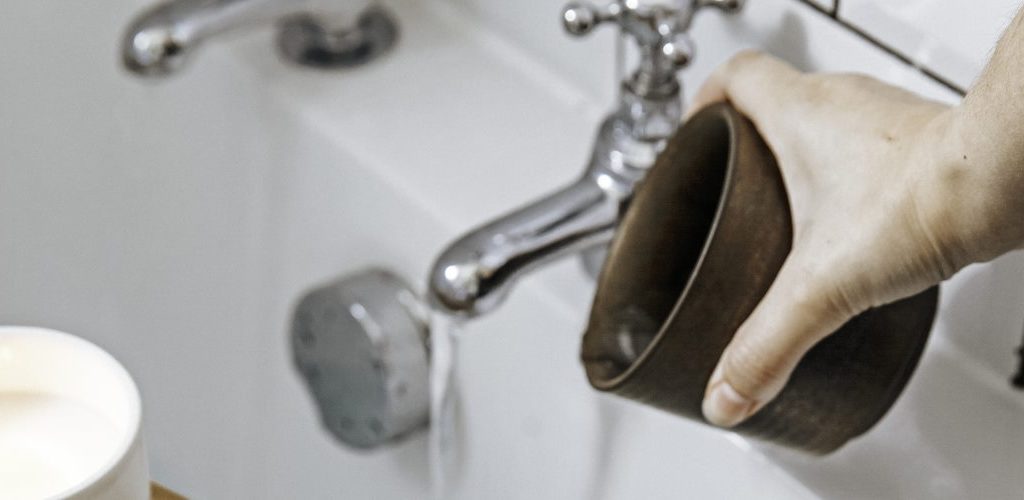




Bathing Culture

As mentioned in a brief history, water, and bathing, has always had significance far beyond the act of washing. As a ritual, it’s existed for millennia across a range of cultures and countries which, despite their apparent differences, share many similar elements – the use of steam, for example, or the incorporation of herbs, or a social aspect of bathing rituals.
In this section, we’ll take a ‘dip’ into some of these, but more information can be found in The Bath Project book

Bathing in Ancient Greece
According to mythology, certain natural pools and springs had been blessed by the gods, and so had had healing qualities; originally, such natural features were utilised but over time, facilities were built up around them, incorporating features both practical and aesthetic. Later on, the Greek gymnasium complexes contained purpose-built baths and showers – in fact, we can see much of the modern day spa in the practices of Greek antiquity, where wash basins, small tubs and foot baths were employed for personal hygiene. One difference, however, is that Greek bathers are likely to have brought their bathing products with them, including curved strigils, which were used for scraping the skin of impurities, as well as towels, cleansing clay, and nourishing oils.

Onsens in Japan
Directly translated, onsen means ‘hot spring’ – as a volcanic country, Japan is riddled with them and some of these baths are outdoors, while others have had facilities built around them. To qualify as an onsen, the water must be at least 25C when it rises up to the ground, and must contain at least one of a number of the naturally occurring chemical elements found in hot spring water. The act of soaking in these mineral-rich waters has long been held to improve skin, circulation and general well-being – not to mention the fact that their location, often in places of natural beauty, adds another layer of sensory benefit. Sento, public bathhouses, differ in that they use ordinary heated water but were historically remarkable for the fact that they helped to transform the act of bathing into a social and non-hierarchical experience; the idea was that, as clothes were discarded, so was status. A shower must be taken before entering the bath and, although it’s fine to cover up with a towel until the last possible moment, it mustn’t go into the water (many people put theirs on their head) – or worse still, be wrung out into the water! As these baths are sociable places, chatting at a considerate pitch, is allowed.

Hammams in Morocco, Turkey and the Middle East
Cleanliness and community are deeply rooted in Muslim beliefs and in this age-old tradition, they are combined, with thorough top to bottom cleansing and the opportunity to socialise and relax. Men and women, both naked, occupy separate sections of the hammam and, although gossip and chit chat formed a large element of the social aspect of the experience, this was often also where decisions and agreements of more import were made. Moving from room to room, one first sits in an intense dry heat to acclimatise, before moving on to a steam room, where the pores open and impurities are sweated out. Returning to the first room, the body is slathered with an oil-rich black soap, which is then scraped from your skin with a hammam glove, taking layers of dead skin with it. Follow up by taking handfuls of rhassoul clay and coating yourself in it, before sluicing yourself with water and massaging it all away. Traditionally, you’d buy your supplies in the souk before entering the hammam; these days, many places provide these for you and, for a few extra dirhams, an attendant will perform all of the soaping, scraping and sluicing for you.

The Medicinal Bath in China
The Chinese practice of medicinal bathing reaches back thousands of years, with various herbs added to the water to boost health. Over time, such methods were refined for specific purposes, such as gynaecology and dermatology. Even without expert input, people would add certain ingredients to their baths according to whatever symptoms they were experiencing; they would also harness the aesthetic benefits of bathing, with ingredients aimed at improving skin and hair quality. Emotional and mental wellbeing were also maintained by the practice of bathing and the addition of certain plants, herbs and flowers.
Today, in the remote reaches of South West China, the Yao people use a fiercely-guarded recipe, which has been passed down through generations, of a variety of herbs to dispel toxins and promote hygiene. Listed as a piece of Intangible Cultural Heritage, the medicated bath is made by adding the herbs in a certain order, and boiling for a specific amount of time. The concoction is then transferred to a barrel, and more water added, before people bathe in it. A sequence also applies to the order of bathing: older people take precedence over younger ones; males before females, and guests before hosts. To complete the ritual, faces are washed with clean water after the bath has been taken.

Mikvah in Jewish culture
It’s easy to see how significant bathing is in Jewish religion, since the the source of jewish law, the Rabbis of Talmund, hold the making of the bathing pool to be more important to a community than the building of a synagogue.
With its purpose being purification, there are certain criteria that must be met in the making of the bath. Both men and women use the mikvah, but its close links with menstruation make it of additional importance to females, with women obliged to bathe in the mikvah waters after menstruation and childbirth. Other significant events are also marked by mikvah, such as wedding preparations, the weekly Shabbat and Yom Kippur.

Banya in Russia
Most commonly found in cities in towns (although people with a country home would generally build one there, as well) the banya is so integral to Russian culture that it features in several proverbs – ‘the banya is like a second mother’, and ‘the day you spend in the banya is the day you do not age’ being two of them. It consists of a steam room, traditionally generated by woodfire and water, in which one sits or lays on benches of varying heights; the higher the ledge, the hotter the steam. Bundles of specially prepared twigs and leaves, called venik, are used to lightly stroke and beat the body, thus improving circulation and boosting metabolism; the trees from which they are made (most commonly birch or oak) also have certain properties and oils that inhibit pathogens, promote anti-ageing and detoxify the body. As with the baths of many other cultures, the banya is a place to get together with friends and family, and slapping one another with venik forms a part of the sociable experience, although an attendant, called a banschik, can help you out if needed. At the end of the banya, cold water is sloshed all over the body, or the bather plunges into a cold pool; in winter, it’s not uncommon for people to simply head outside to roll around in the snow.

Saunas in Finland
Women often give birth in a bath or pool, but one-time Finnish president, Urho Kekkonen, was born in a sauna – and reputedly used them throughout his Cold War career to hold meetings and negotiate with the Soviets. Not yet convinced of the special place that these steam rooms hold in the Finnish consciousness? In a country of about 5 million people, there are said to be roughly 2 million saunas – that’s about one per household. Early on, the sauna was most likely a deep pit with a pile of heated stones in the corner; these days, the premises may be more sophisticated but the basic principle is the same, with a löylykauha, a type of ladle, being used to pour water on heated rocks to release löyly, steam. Temperatures can typically reach levels as high as 70-100 degrees celsius, and around 99 percent of Finns reportedly enjoy them at least once a week, holding them to be a place of both mental and physical cleansing. Whisks of leaves, called vihta, are used in the same way that the venik is used in Russia, and bathers typically move between the steam room and a cooler one (where refreshments such a beer and water are available) over the course of a number of cycles depending on available time and personal preference.

Temazcal in Mexico
Currently enjoying a revival among tourists to Mexico looking for an ‘authentic’ experience, the Temazcal has its Mesoamerican roots in cosmology and mythology. Used in ritual and prayer, these sweat lodges were connected with rebirth and take place in low, round adobe huts believed to represent the womb; they’re used not only for cleansing the skin and respiratory system, but also as a way of achieving an emotional re-set. Bunches of basil are handed out, with which one beats their skin, releasing the invigoratingly fresh, herby scent and stimulating the circulation at the same time. Ever-thickening waves of steam are released by pouring water onto volcanic rocks, until finally, the healer or shaman in attendance throws cold water onto the faces of the participants, bringing relief from the dense heat. Traditionally, it’s respectful to leave the Temazcal by crawling out backwards, after which the bather is wrapped in a cotton sheet and left to rest with restorative herbal tea or water.

Sweat lodges in Native American Culture
This tradition draws ancient belief systems into the ritual, which involves entering the lodge clockwise and sitting in a circle in darkness in front of a pit of heated rocks, before a medicine man or shaman opens with a prayer. A pipe is passed around to be smoked in turn, while participants shake rattles and chant incantations. Spirit animals are summoned, and prayers said for the universe and everything living within it, as well as for strength and spirit deities. At the end of the ritual, each participant prays silently, to the Great Spirit and their own medicine animal.












